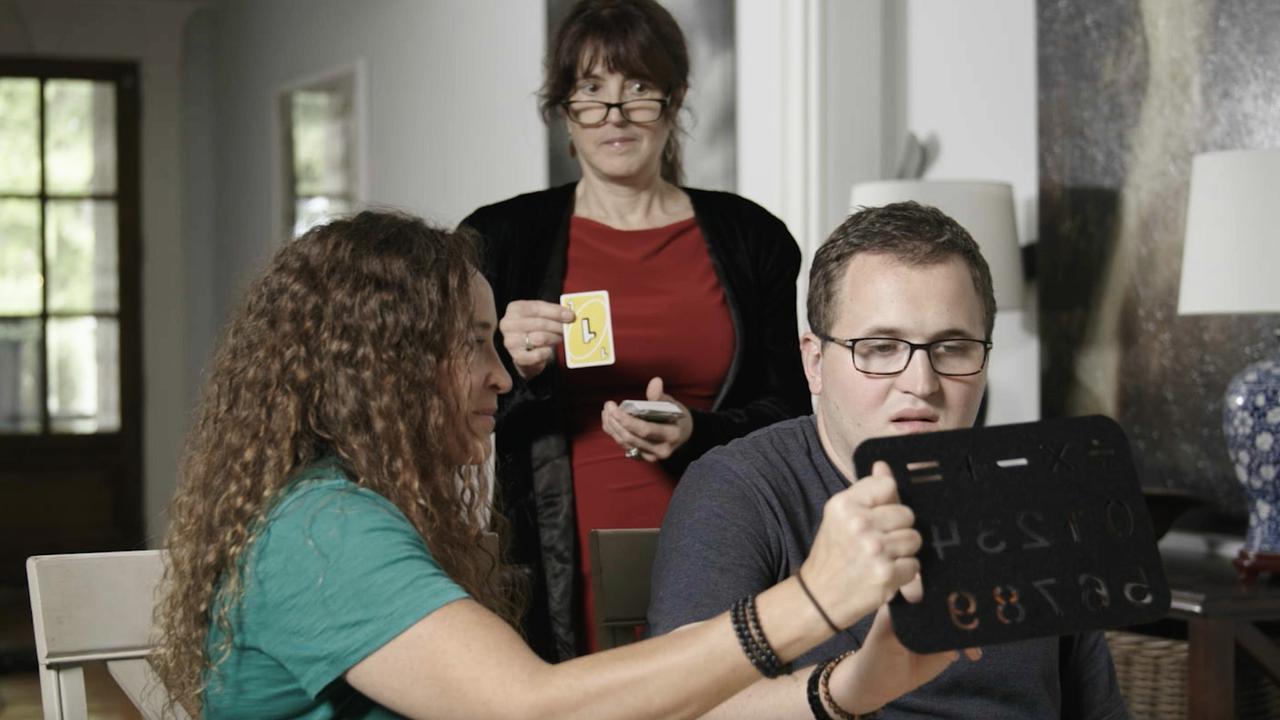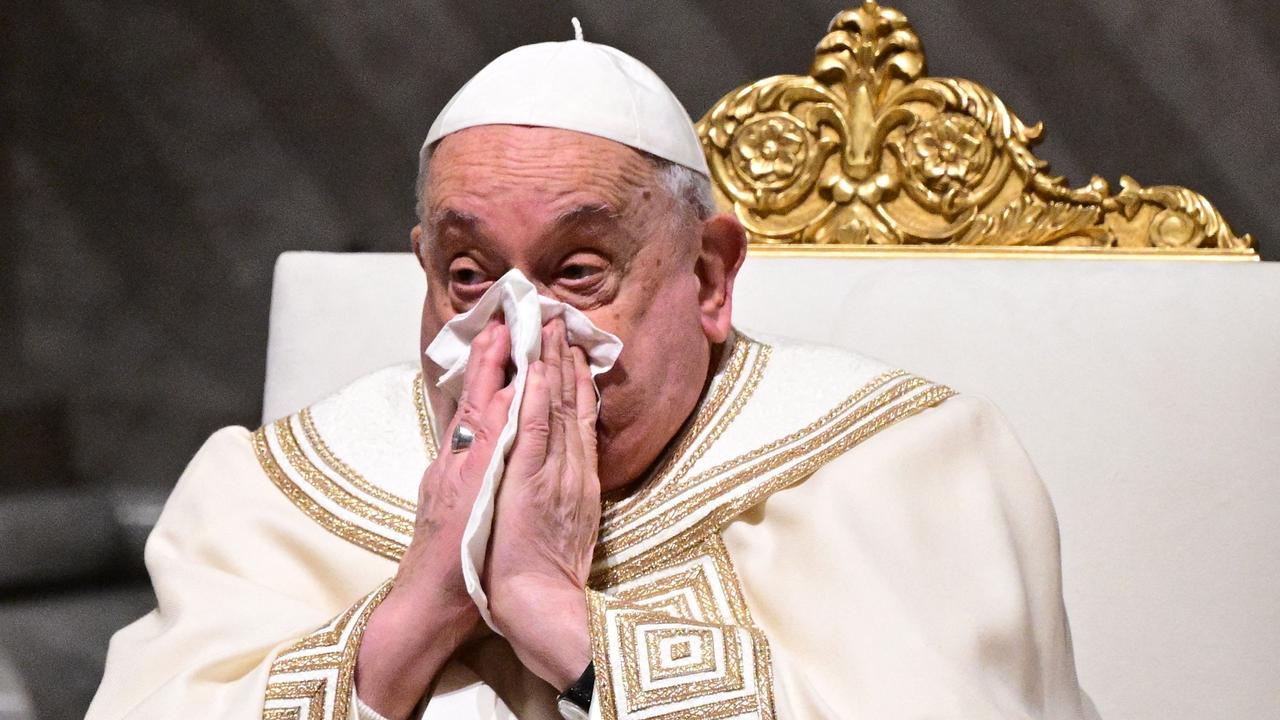Treasure and awe: is this the Kronos Quartet’s last tour here?
The world’s best-known foursome of contemporary classical music is rounding out half a century with what is quite possibly its last tour to Australia.
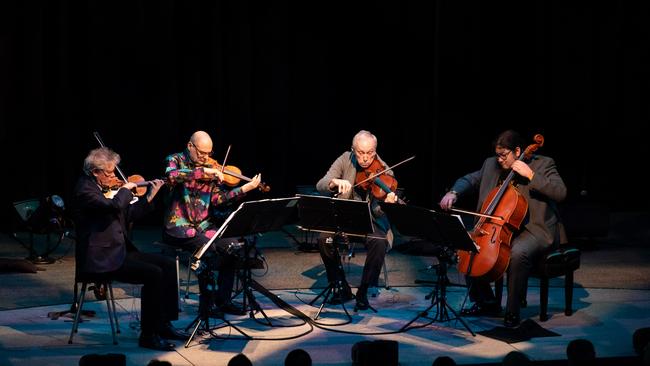
George Crumb’s string quartet from 1970, Black Angels, is not the kind of piece to take lying down. It starts with high, febrile strings on electric instruments that harass rather than tickle the ear and seem to portend something unpleasant – a midnight invasion of mozzies or, rather more ominously, the approach of military helicopters.
Black Angels certainly made David Harrington sit up and take notice when he first heard it on the radio in August 1973. The young violinist was looking for a piece that would somehow express his anger about the “catastrophic” war in Vietnam that was by then entering its final chapter. Black Angels – to which Crumb gave the Latin motto “in tempore belli”, in time of war – was a kind of musical response to military conflict: string quartet as angry yet non-violent protest.
It was the piece that inspired Harrington to form the Kronos Quartet a half-century ago this year, and it has been in the group’s repertoire ever since.
But getting Black Angels ready for performance by the nascent ensemble took some ingenuity, patience and persuasiveness. First, Harrington had to get hold of the score, promising Crumb’s publisher in New York, Edition Peters, that he would send the payment – but would they please not delay sending the music?
Then he had to organise the various parts of the quartet’s unusual instrumentation, including tam-tam gongs, metal thimbles, maracas, glass rods and even a set of crystal glasses. The section of Black Angels called God-Music instructs the musicians to stroke water-filled glasses with their bows.
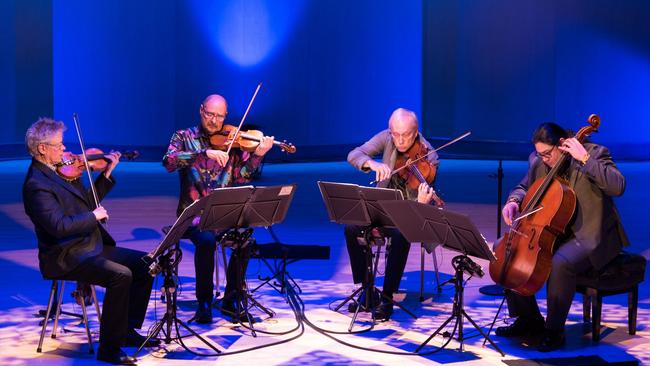
“We were going to various department stores in Seattle with our violin bows and testing crystal glasses, trying to explain to people at the stores what we were trying to do,” Harrington says. “And the score was so big that it needed a huge music stand. We ended up using artists’ easels for the first performance. There are all kinds of things that needed to be figured out that you wouldn’t encounter in any of the string quartet music up until that point.”
Harrington and the Kronos Quartet are returning to Australia in March with their Five Decades tour, including performances of Black Angels in Perth, Adelaide and Sydney.
The Adelaide Festival audience will also hear Iranian vocalist Mahsa Vahdat, and a new piece by Jon Rose and Hollis Taylor, while the Perth Festival will hear a new commission from Noongar composer Clint Bracknell.
It will likely be the group’s final visit to these shores. The Kronos Quartet aren’t retiring, but after the 50th anniversary the players have decided they will step back from the rigours of international touring. Instead they will focus on special projects and a remarkable legacy resource called 50 for the Future – a website with recordings, scores and other material relating to 50 works by different composers commissioned by the Kronos Quartet. It’s all available for free, online.
The Kronos Quartet are possibly the world’s best-known foursome dedicated to the performance of contemporary classical music. (A similar group is Britain’s Arditti Quartet, almost the same age as the Kronos.)
Their early rejection of formal wear and use of amplification and lighting design in concerts are less radical these days than when they started out. But in other ways, the Kronos Quartet are remarkable for keeping alive a kind of countercultural edginess all the while maintaining corporate consistency. Three of the four are longstanding members: violinists Harrington and John Sherba, and violist Hank Dutt. Only the cello position has been something of a musical chair with a turnover of occupants. A new cellist, Paul Wiancko, was officially welcomed to the group in September last year.
And the quartet have stayed true to their mission to create and perform a string quartet repertoire for our time. Over the half-century, they have commissioned an astonishing 1000 new pieces or arrangements.
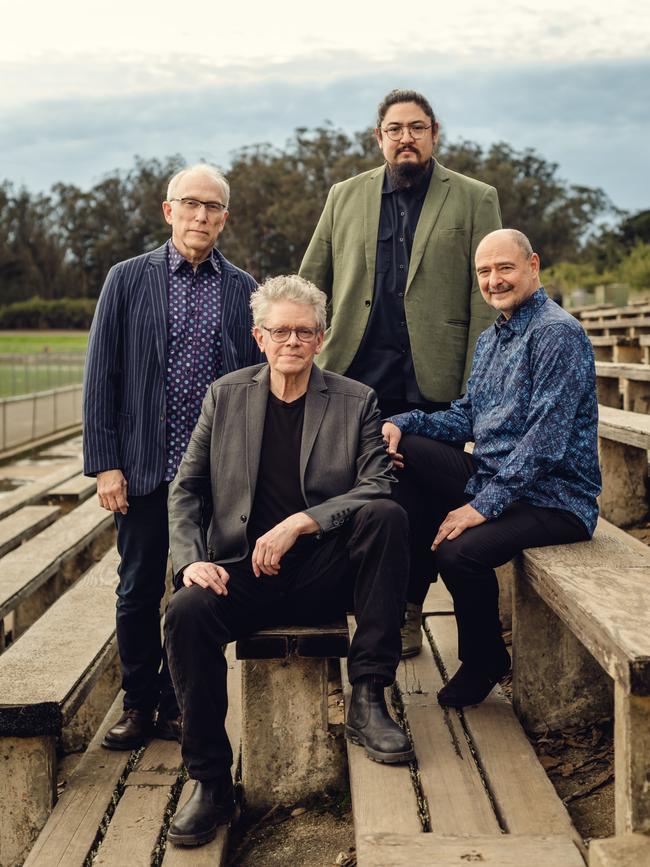
While the Kronos Quartet can trace their artistic lineage, as all string quartets can, to the genre’s Austro-German origins in the 18th century, Harrington and co have taken the art form to some rather far-flung destinations: from the American minimalists of Terry Riley, Steve Reich and Philip Glass; to jazz, folk and film scores; to the world’s many classical and indigenous music traditions in collaborations with artists such as Azerbaijan’s Franghiz Ali-Zadeh, Chinese pipa virtuoso Wu Man and Inuit throat singer Tanya Tagaq.
Given the abundance of musical resources available to professional musicians today, what keeps composers and performers coming back to the string quartet? Haven’t its possibilities been exhausted, its means of expression stretched as far as they will go?
Harrington tells the story of the first time the Kronos Quartet played in Hungary at the Eszterhazy Palace, almost the string quartet’s spiritual home. It’s where Joseph Haydn – the nominal progenitor of the string quartet wrote 68 of them – was the court composer.
“Every string quartet player has what I’d call an inner Haydn – and my inner Haydn was bounding with joy, smiling profusely, laughing,” he says.
“When we were at the Eszterhazy Palace we played music by Geeshie Wiley, one of America’s amazing blues singers, and music by composers from Africa and China and places where Haydn never went to, where the art form of his day never got to touch.”
It attests to the string quartet’s elasticity as a medium, its ability to stretch to and absorb other musical languages and traditions.
“Composers I have talked to always say that writing for the string quartet feels like the most personal expression – whether it’s Henryk Gorecki, or Terry Riley or any composer we have worked with,” Harrington says.
“One thing they all agree on is how personal this artform feels. Part of it happens because of the way the music has to be rehearsed, with four people. It is a conversation, it is trial and error, it is critiquing each other, it’s getting the best out of the player who sits next to you. It’s finding a way of being a teacher, and learning to listen more deeply.”
The quartet had a fruitful relationship with Australian composer Peter Sculthorpe, who dedicated his string quartets Nos 10 and 11 to the ensemble. Another Australian collaborator is Jon Rose, the experimental musician and violinist whose Music for Four Fences, performed by the Kronos Quartet, involved custom-made wire fences. In their new project for the Adelaide Festival, Rose and zoomusicologist Hollis Taylor have written a piece called Beak that incorporates birdsong.
Harrington also is thrilled that the Kronos Quartet in Perth will perform its first piece by an Indigenous Australian, Clint Bracknell, aka Maatakitj, a specialist in the revival of Noongar language and song.
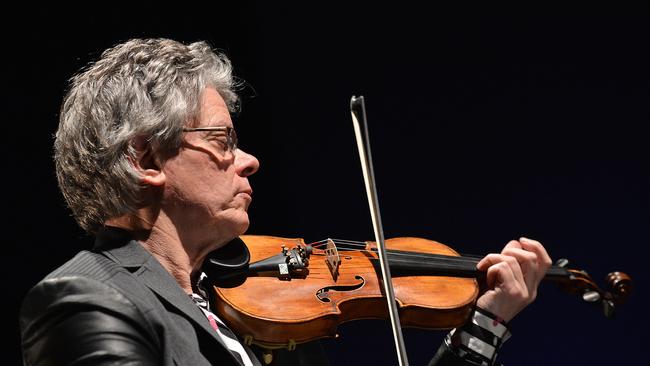
“That is something I wanted to do the first time we came to Australia,” Harrington says. “It has never happened, until this tour, and it will happen. For me, that’s a very big moment in our work, and I am so looking forward to working with Clint Bracknell.”
The 50 for the Future project – several pieces from which will also be heard on the Australian tour – already has inspired projects around the world. The website includes pieces by US contemporary composers Laurie Anderson, Bryce Dessner and Missy Mazzoli, Malian composer Hawa Kasse Mady Diabaté, and Benin singer-songwriter Angelique Kidjo.
And it’s not only string quartets who are leaping into this rich resource. Harrington says pieces have been performed by a recorder quartet, a saxophone group, and more.
“Oh man, some of the Hawa Kasse Mady Diabaté pieces have been played by brass groups, and it just sounds so great,” he says. “That’s what we were hoping for – not to have other groups be like us, but they are welcome to use this music. There is so much that’s fun, and sonically really cool in 50 for the Future. What I’ve learned is that one musical adventure leads to another. It’s thrilling and fascinating the way music works, and how people find their voice.”
Crumb’s Black Angels is often cited as an example of avant-garde classical music from the late 20th century. After more than 50 years, the 20-minute piece has not lost its power to rattle the listener, with its virtuosic demands on string instruments, shattering gongs, references to Schubert and monastic chant, and even shouts from the players.
Harrington says Crumb, who died last year at age 92, was careful not to explicitly link the quartet with the war in Vietnam and, indeed, the Kronos Quartet have performed the work in the context of other wars. The Australian performances coincide with the first anniversary of hostilities in Ukraine.
“For me, as a listener when I first encountered it, as a young musician, this was my response to the war in Vietnam,” he says. “(Crumb) didn’t want to go quite that far. I appreciate that, because there have been so many other wars, and we have played Black Angels during every one of the American wars since then.
“If anything it has gained in resonance, and relevance.”
Five Decades Tour of the Kronos Quartet visits Perth, Melbourne, Hobart, Adelaide and Sydney, March 1-14.

